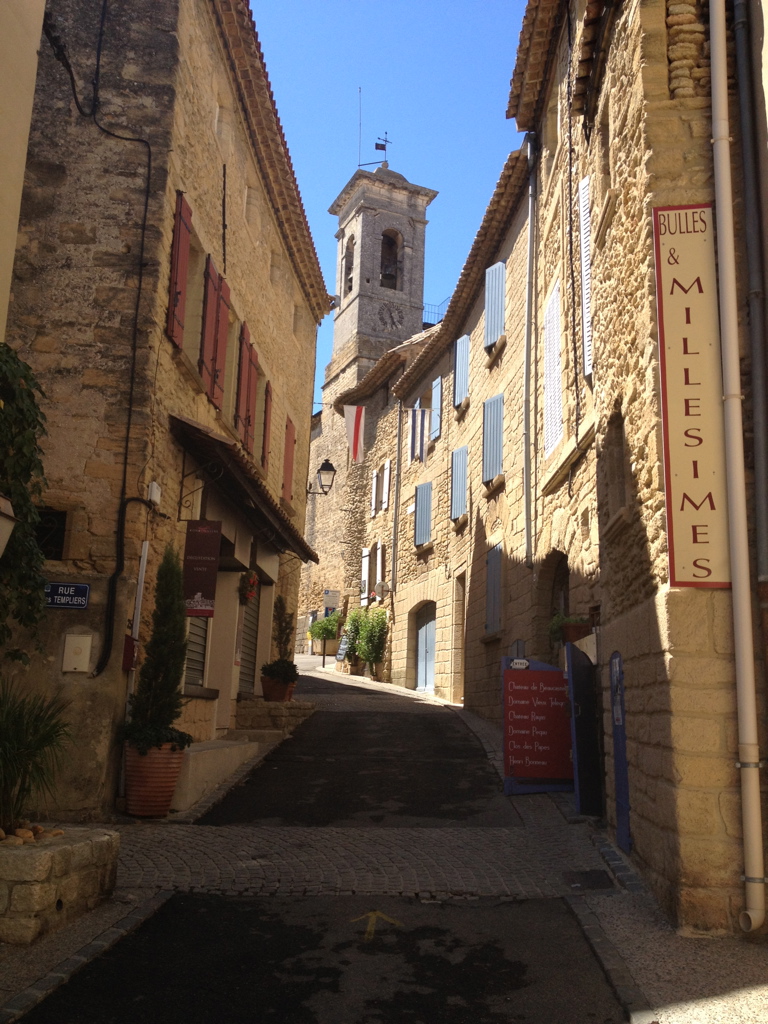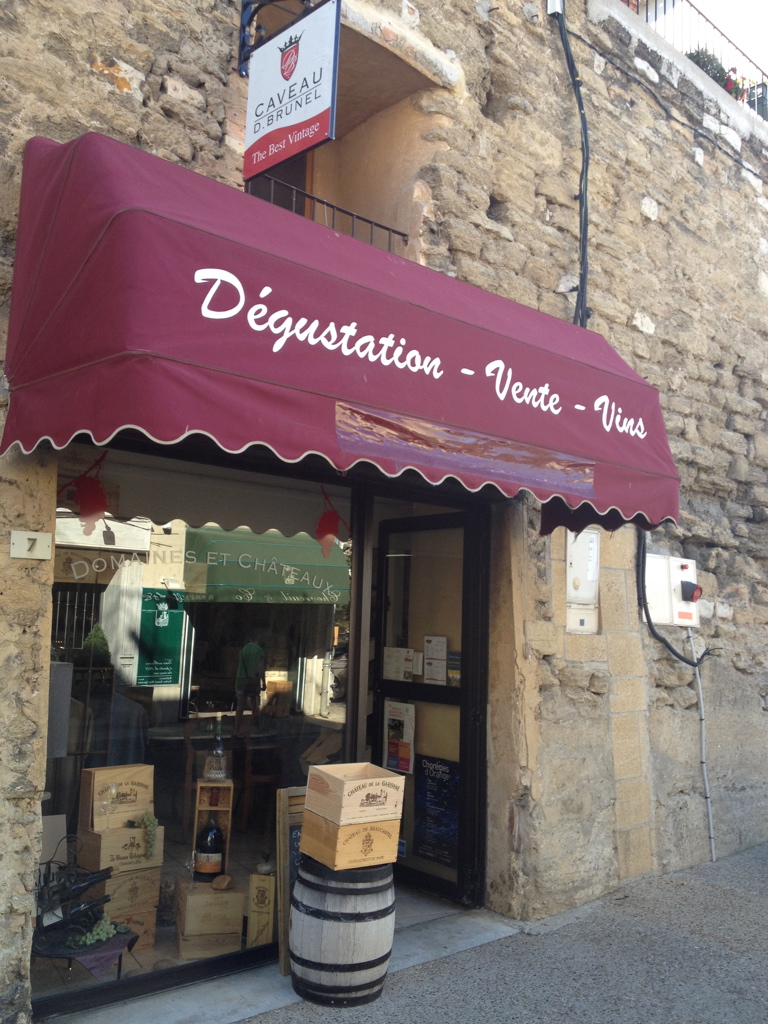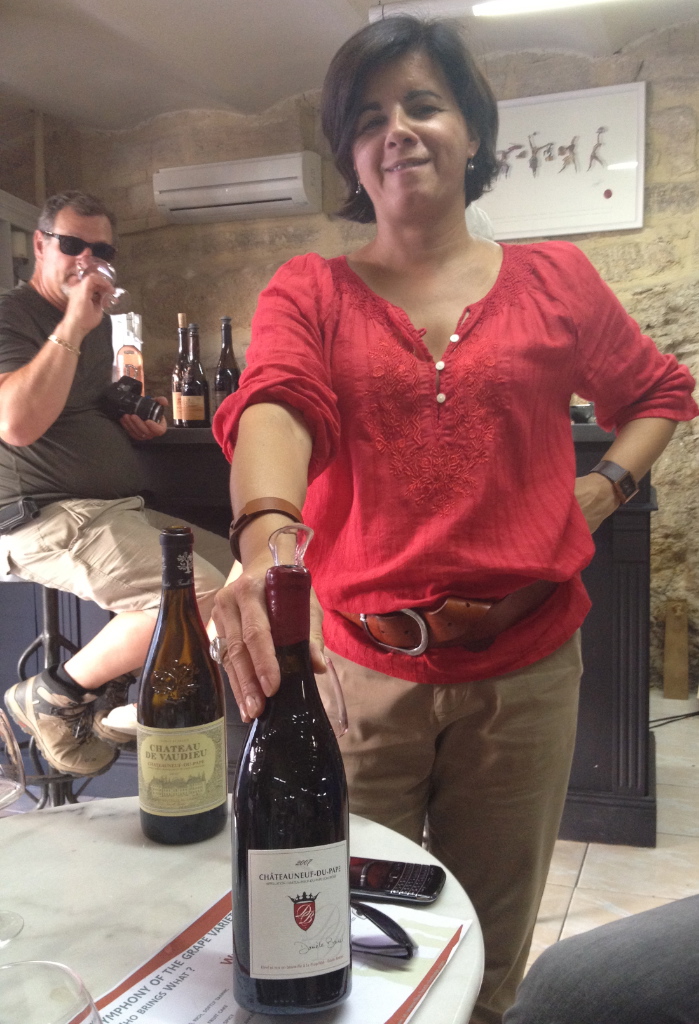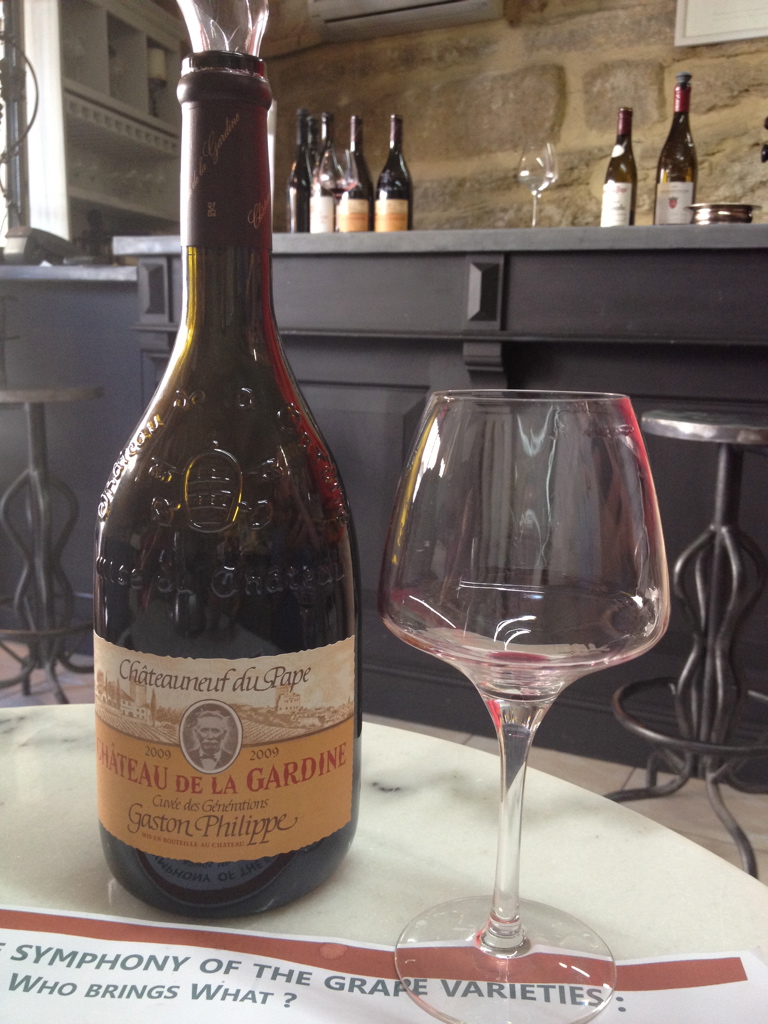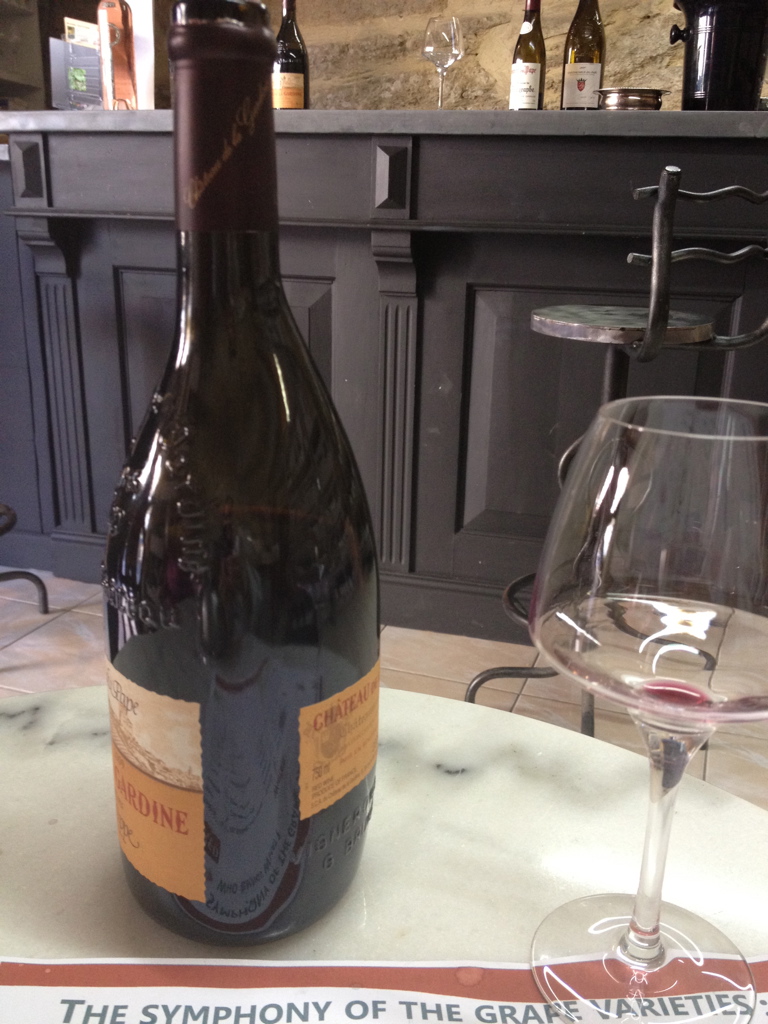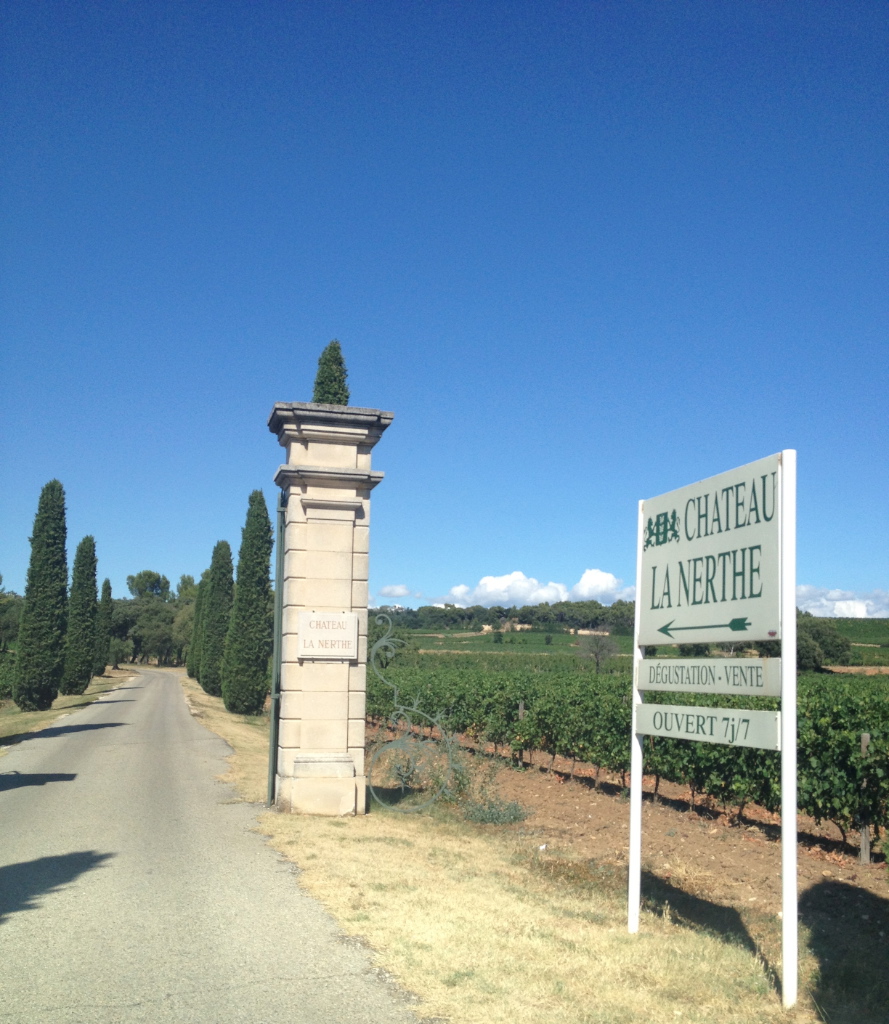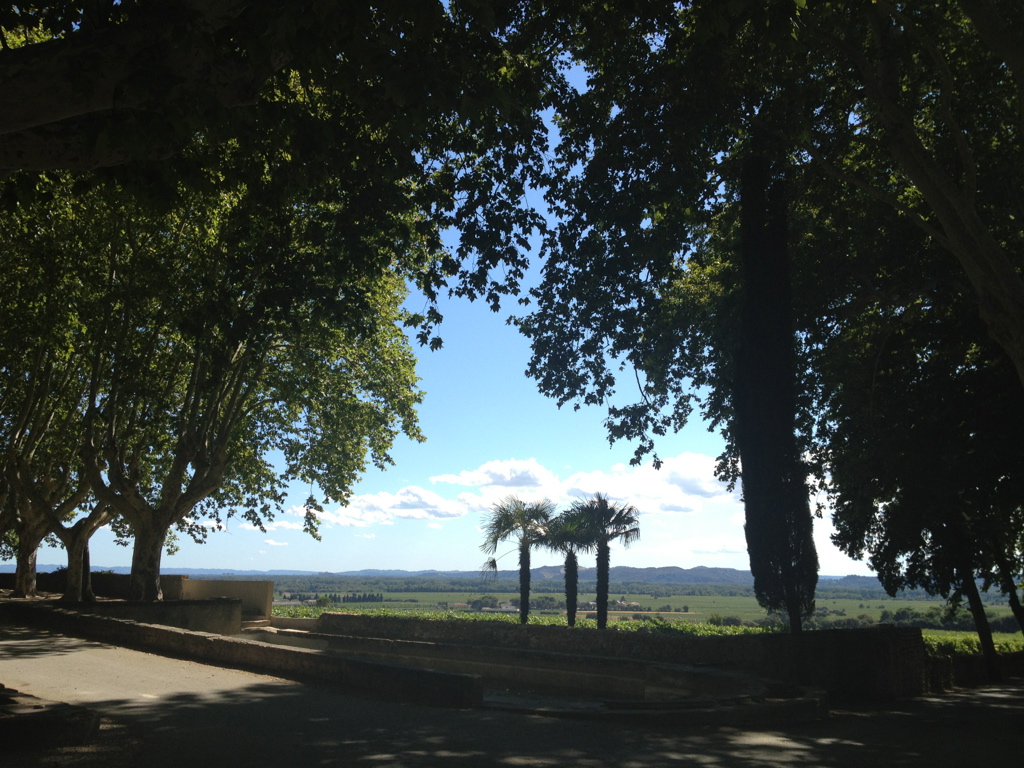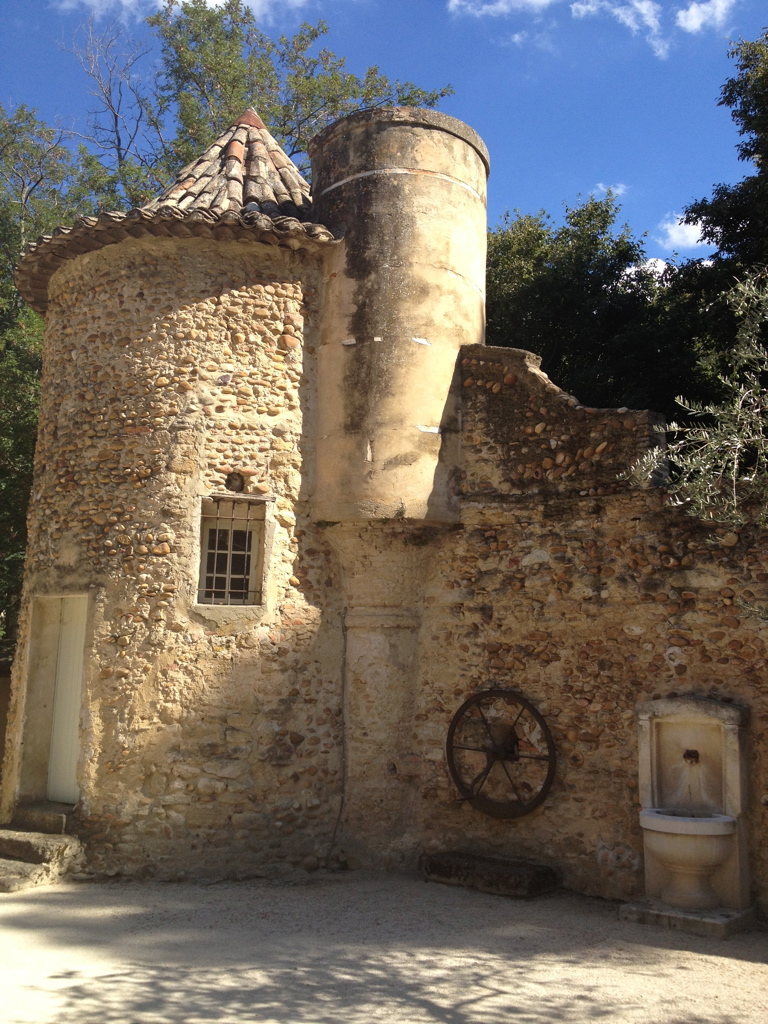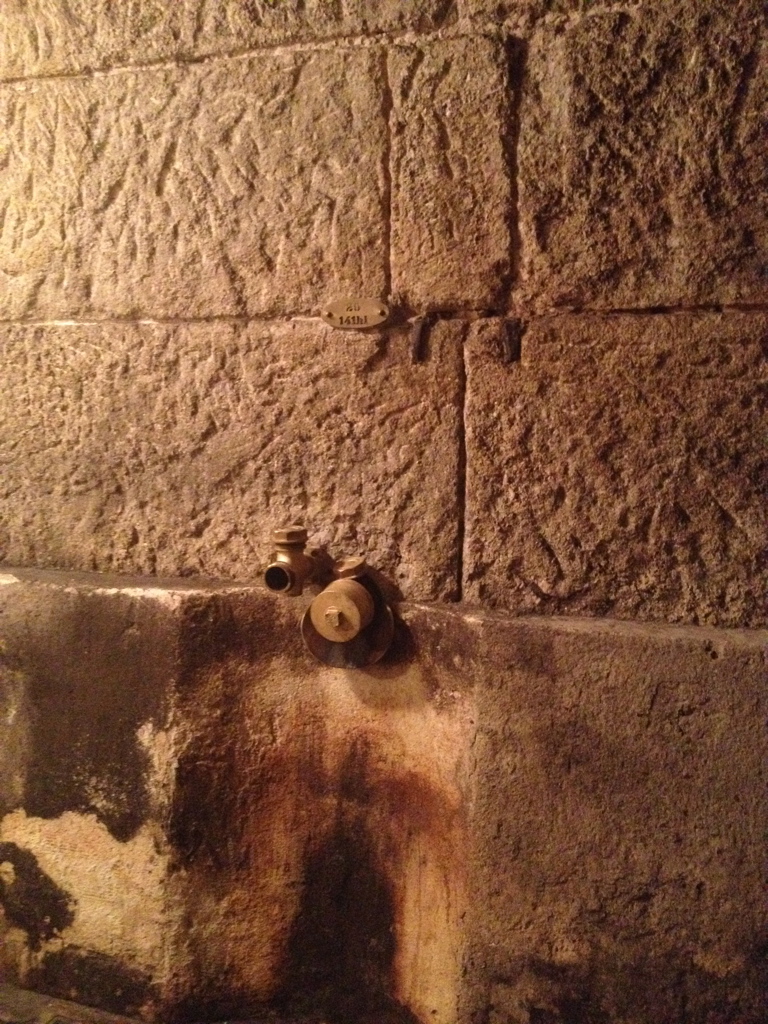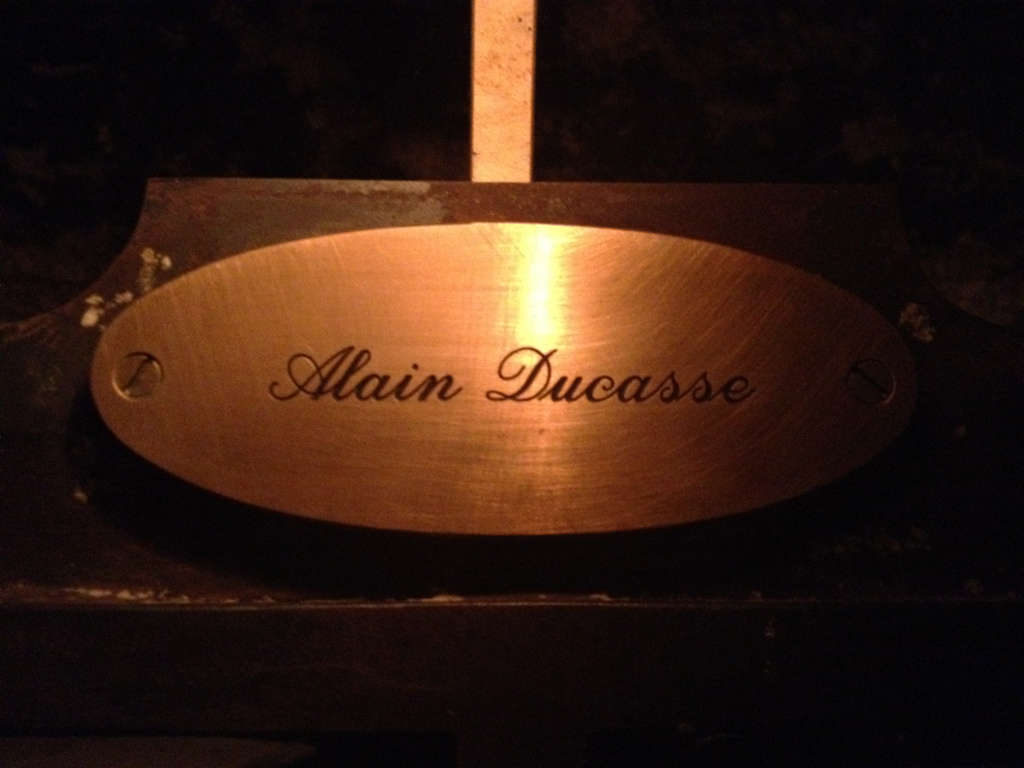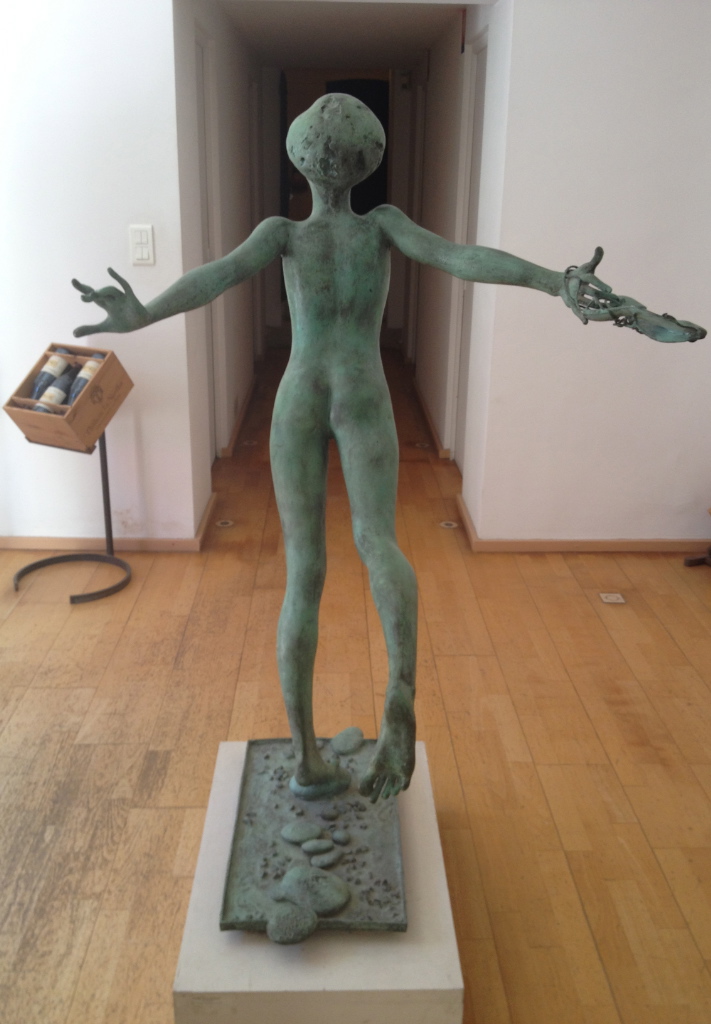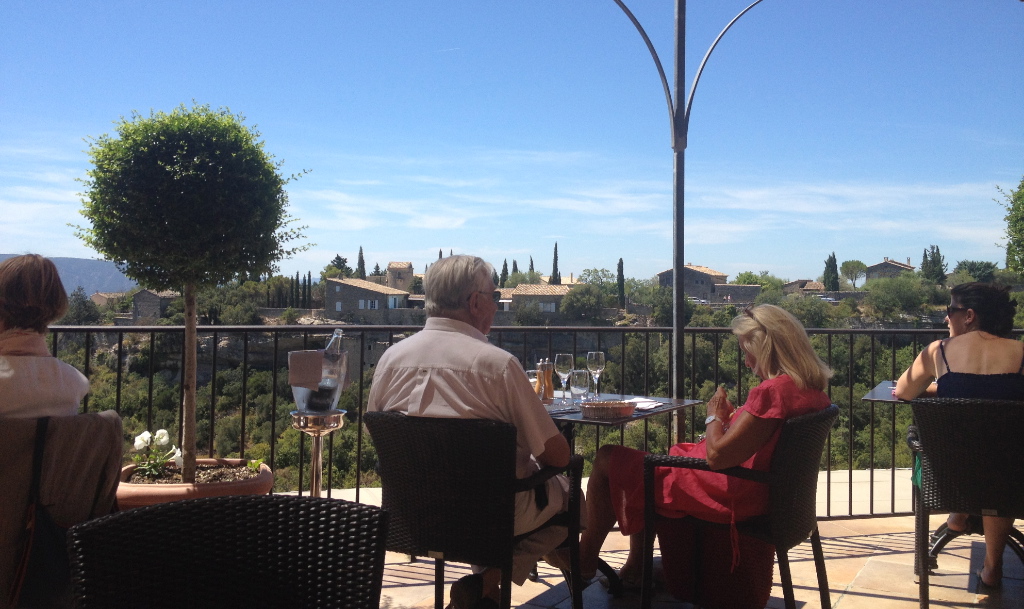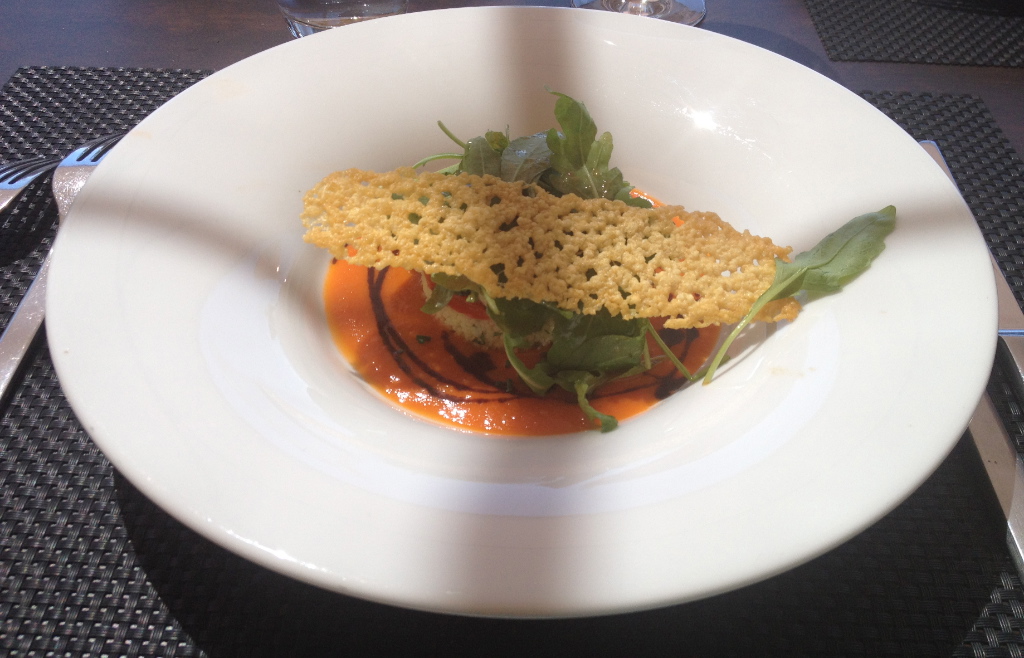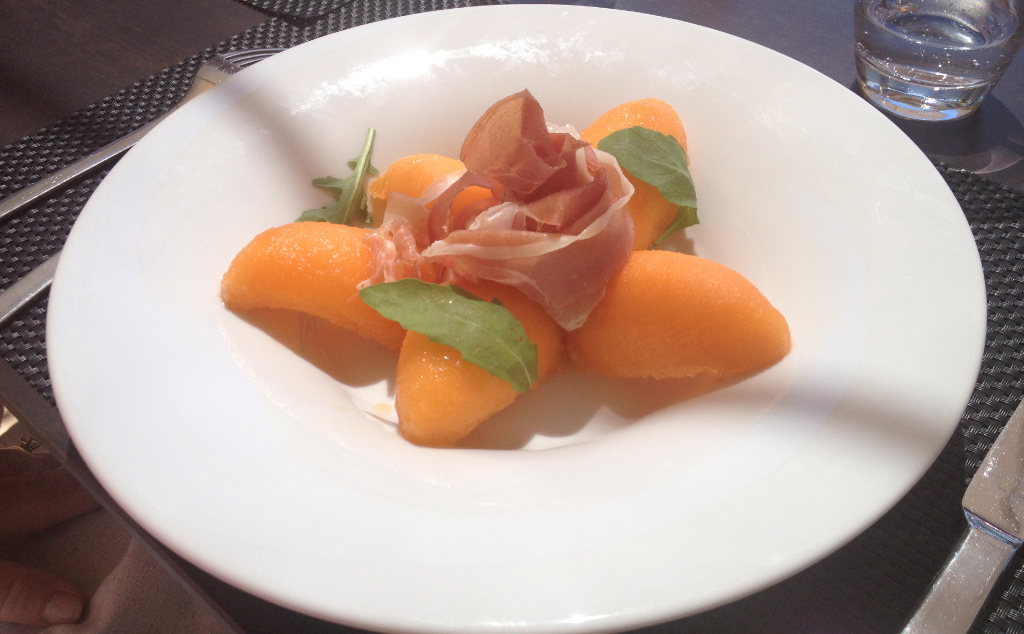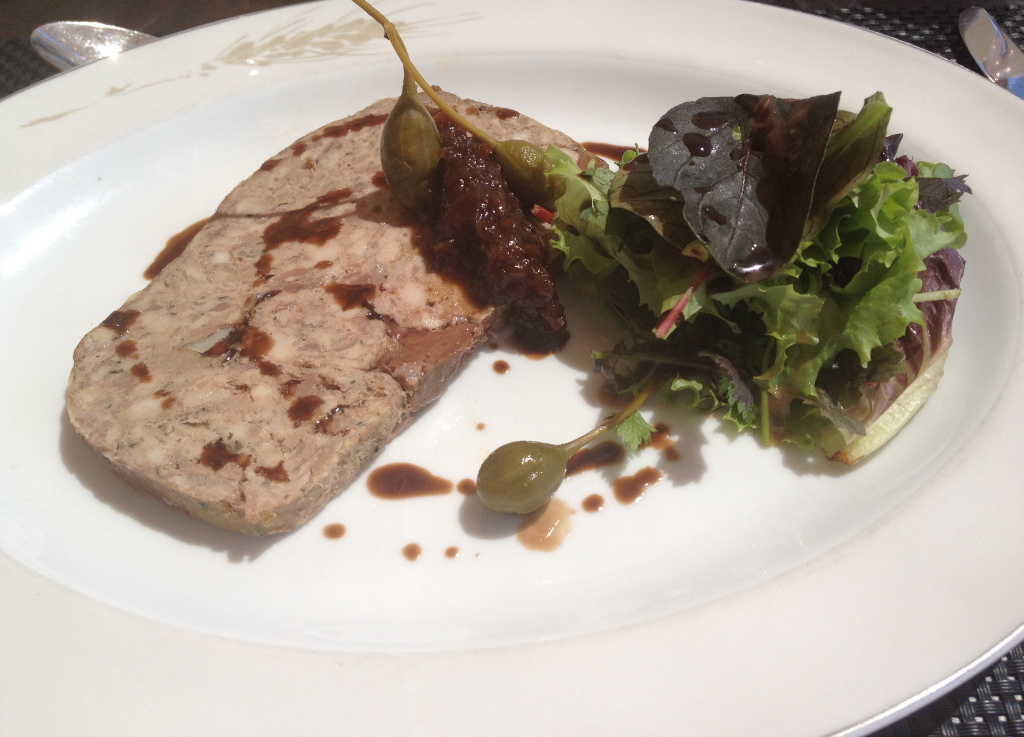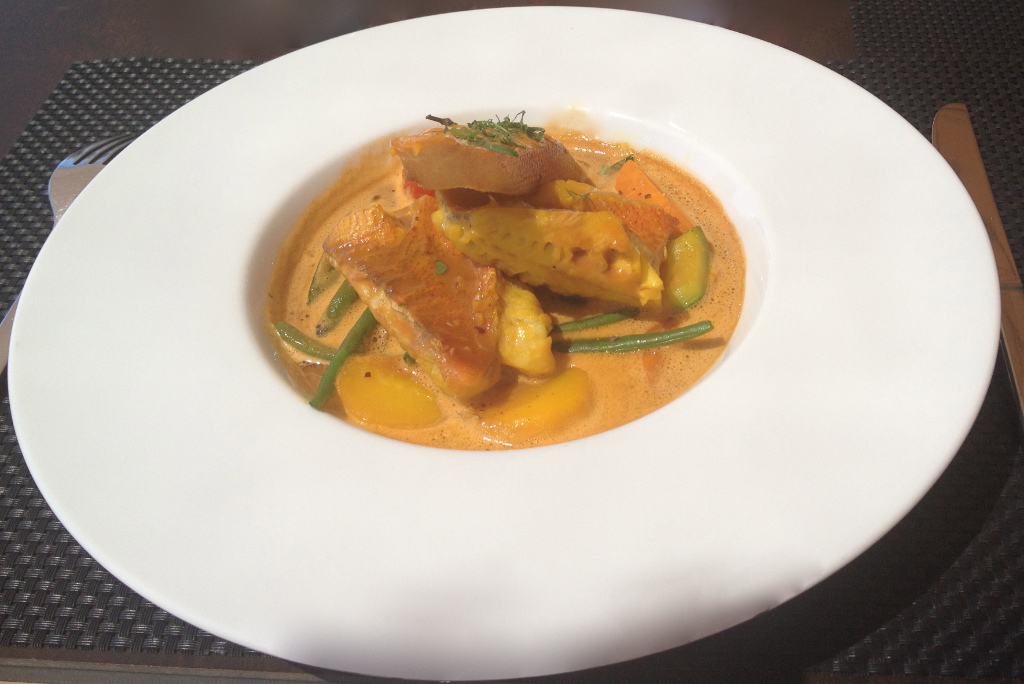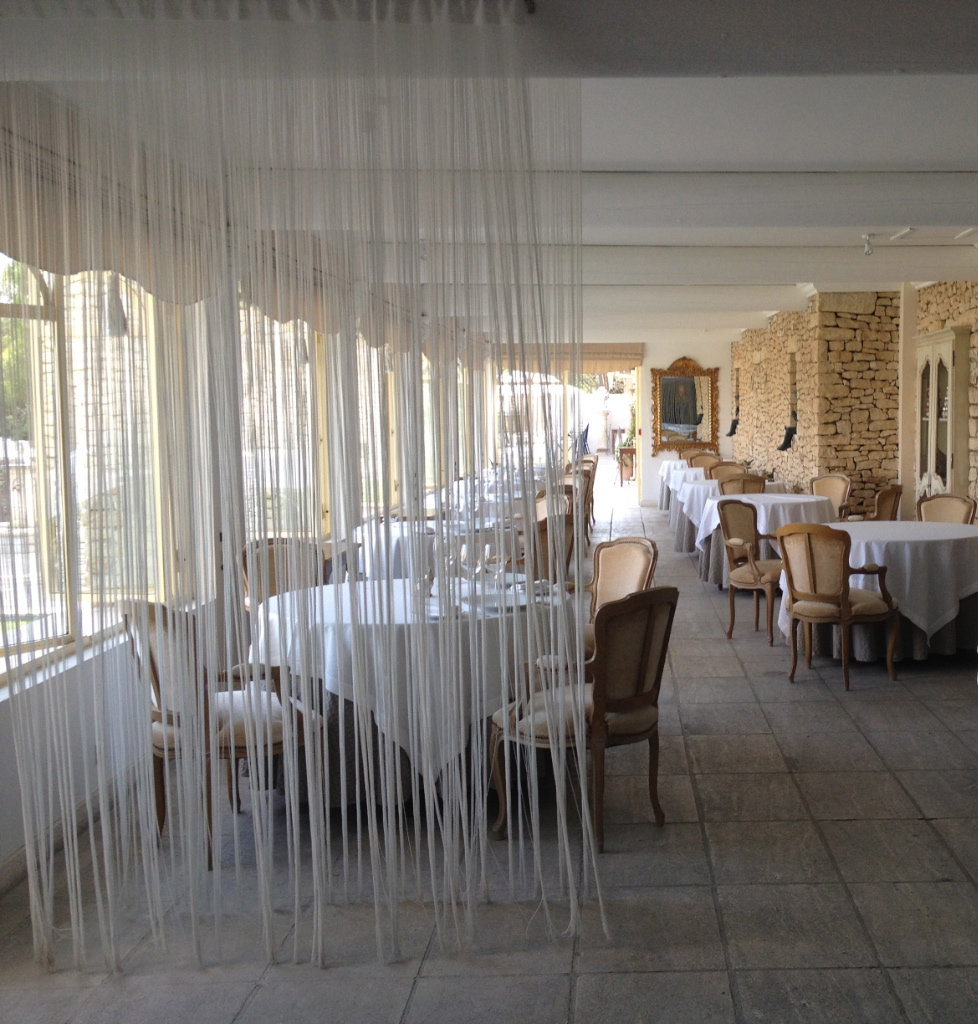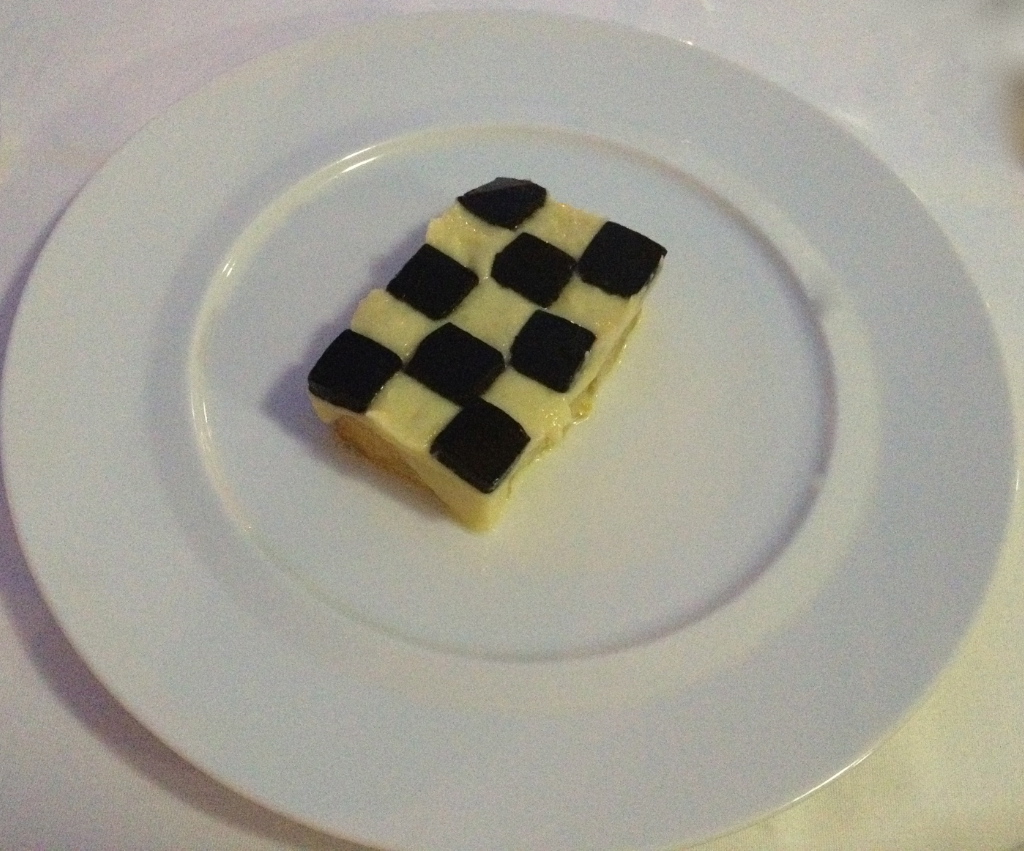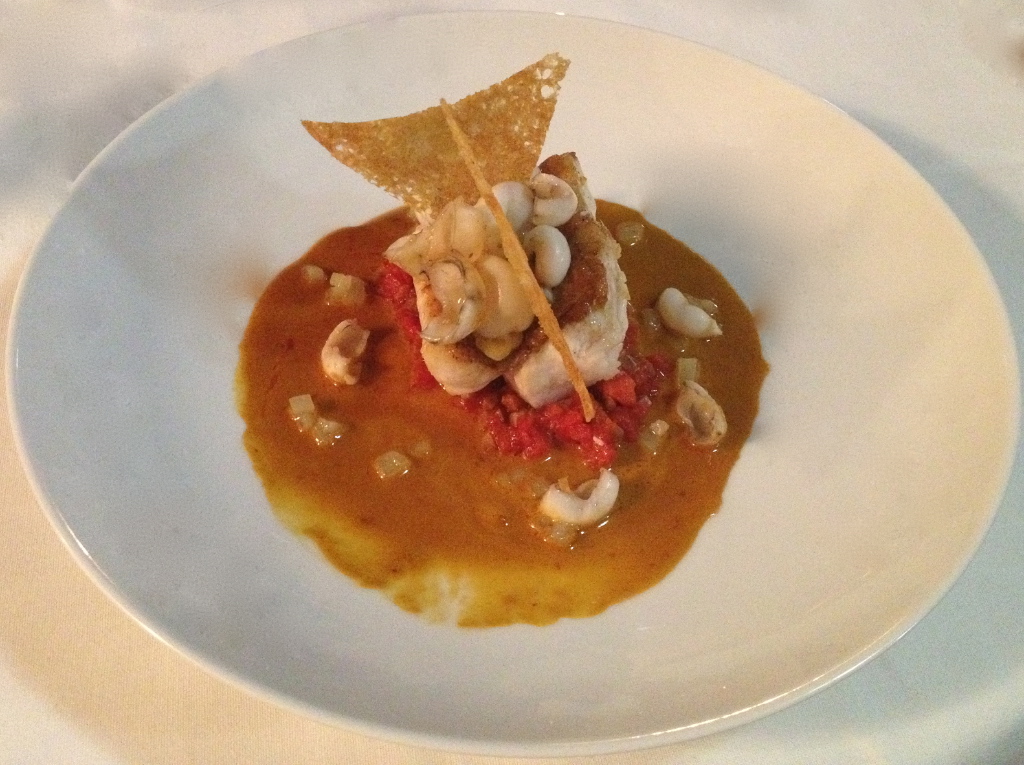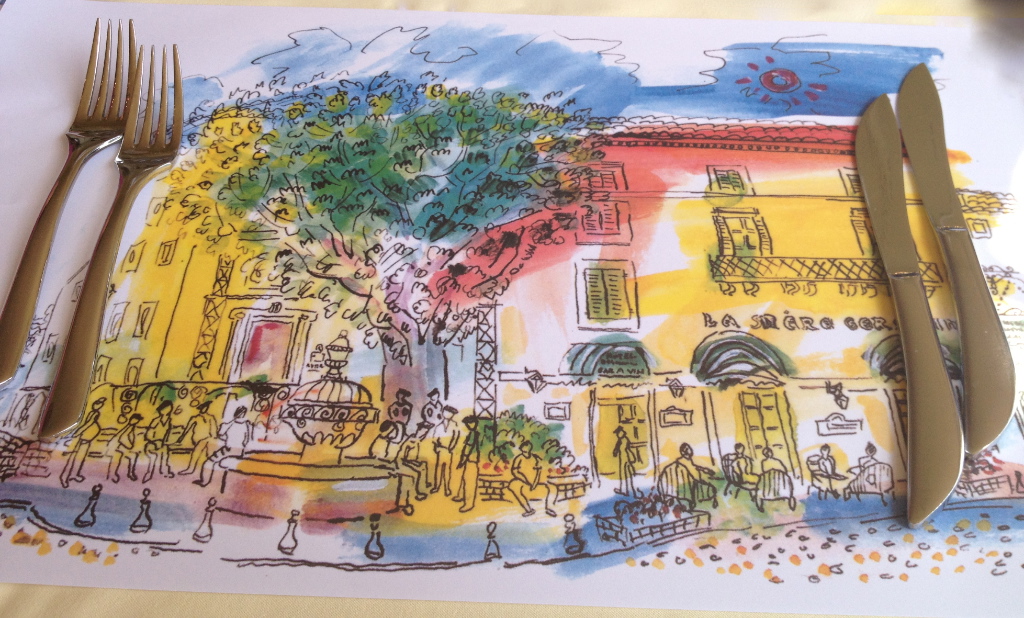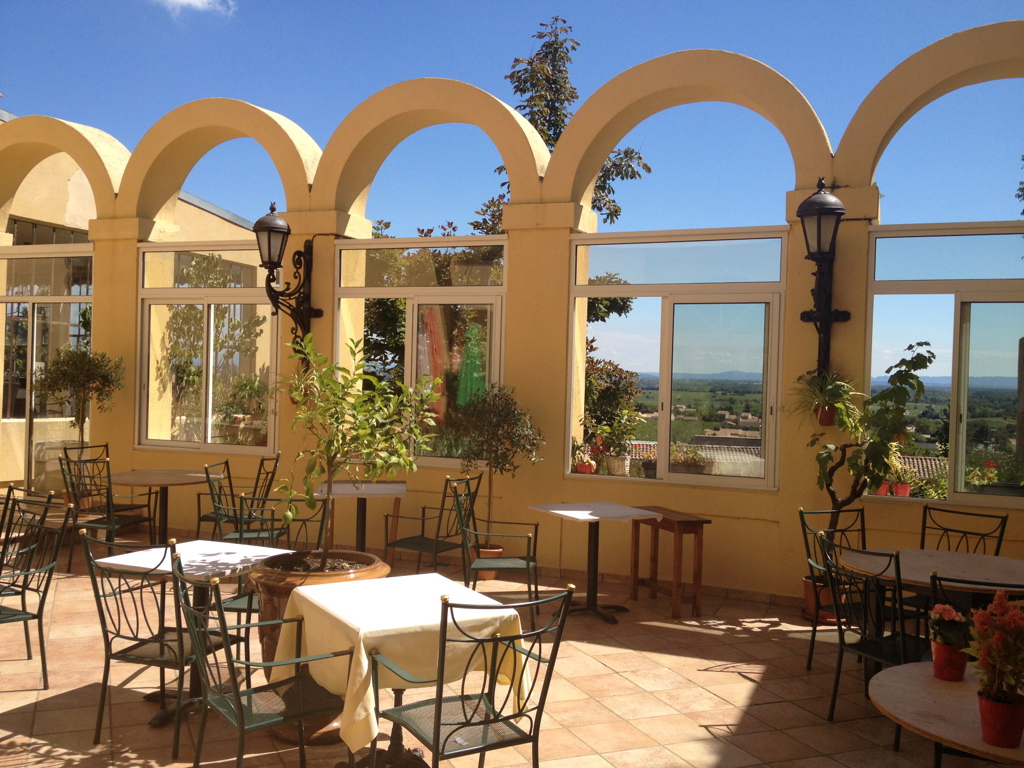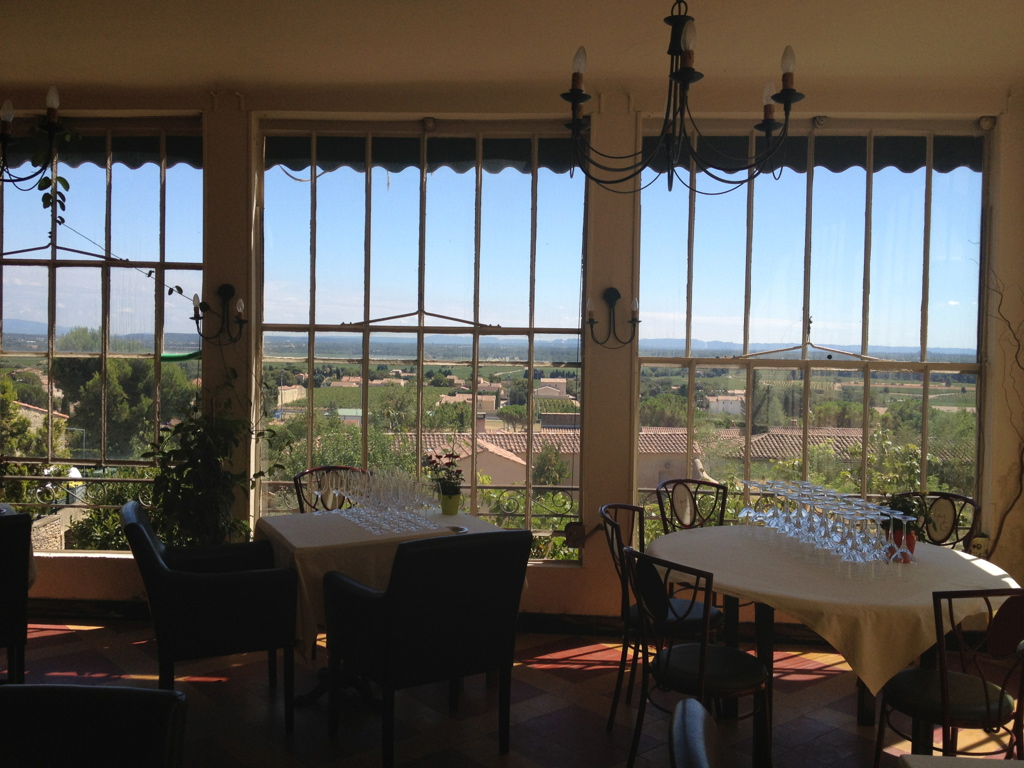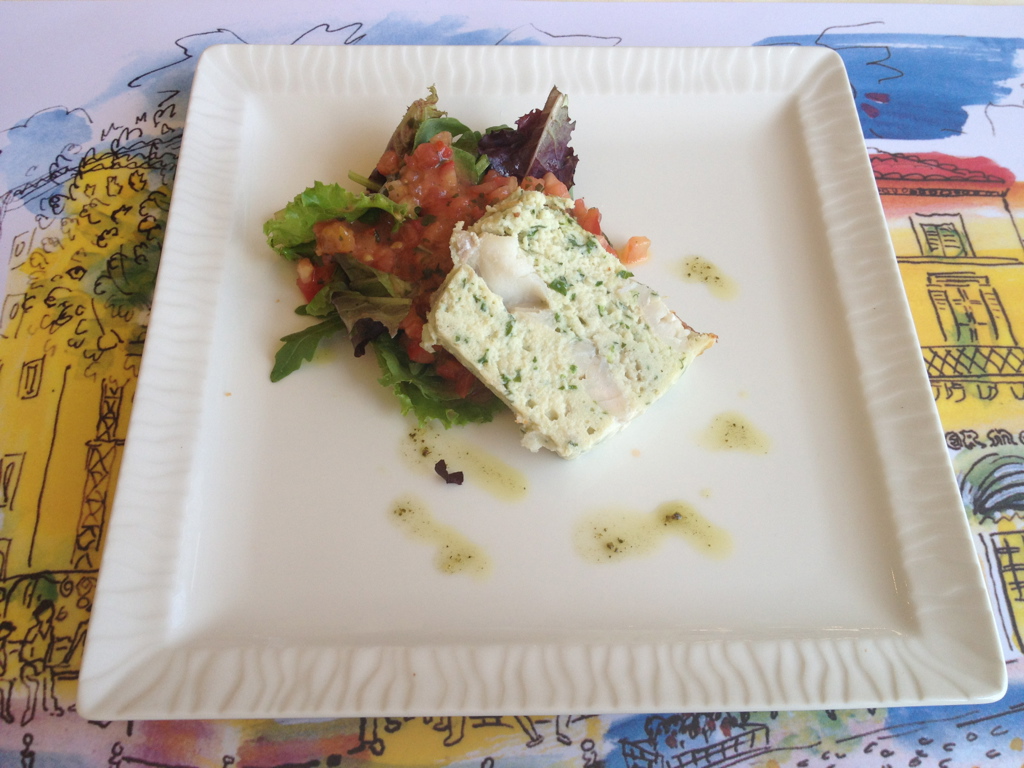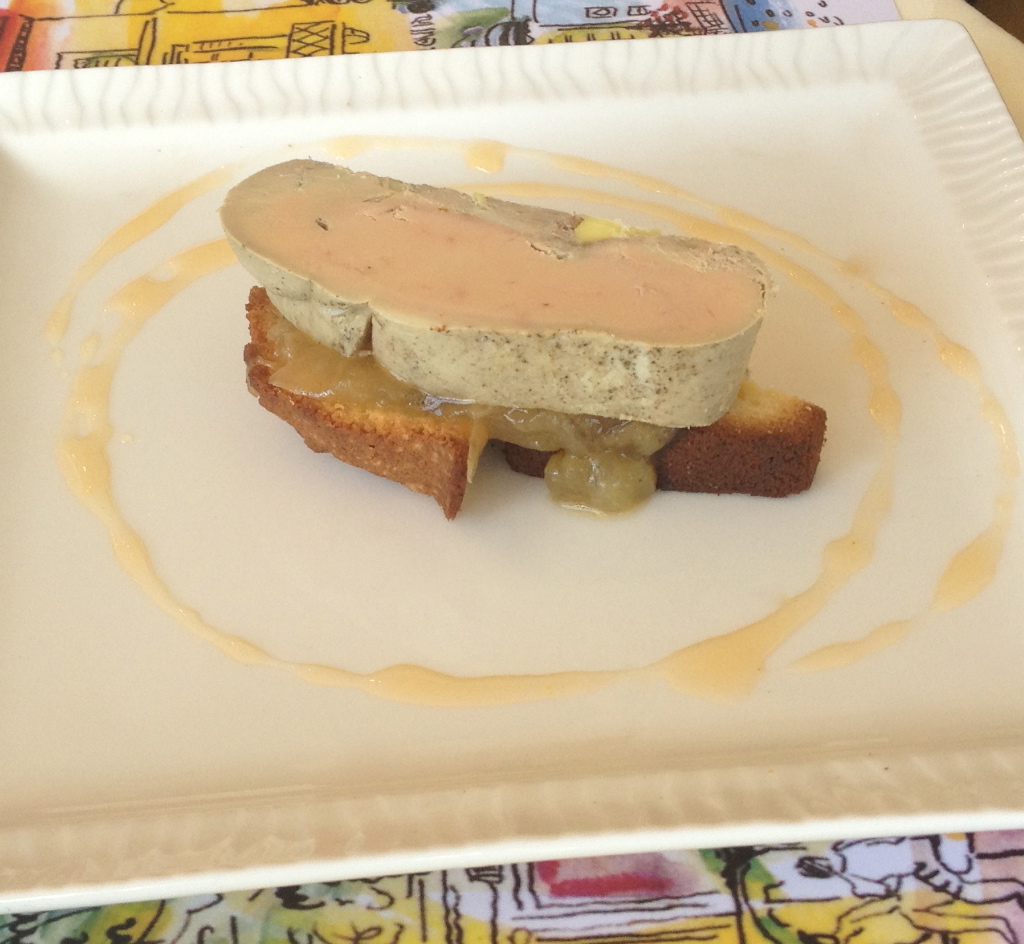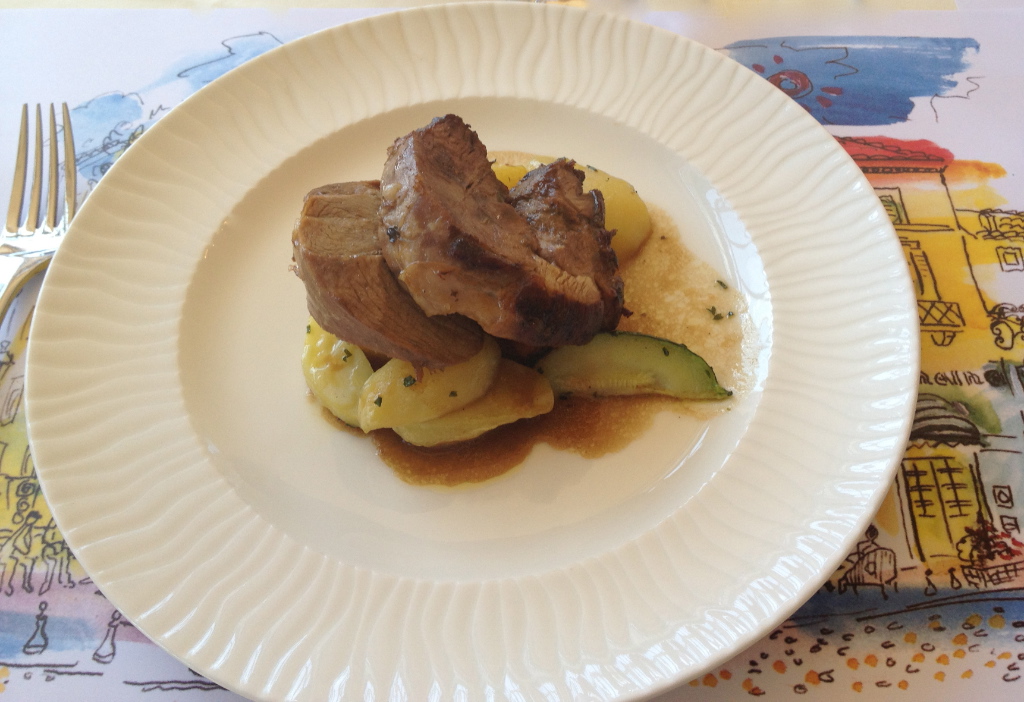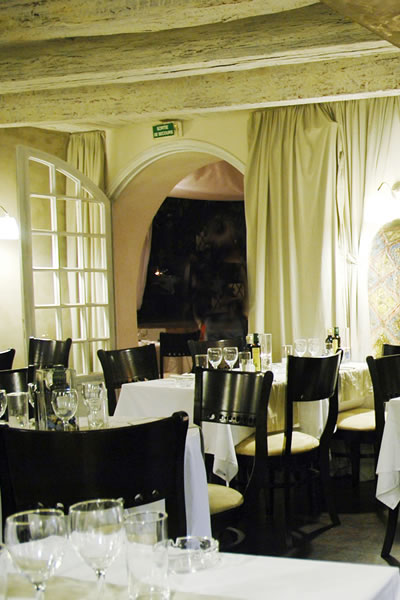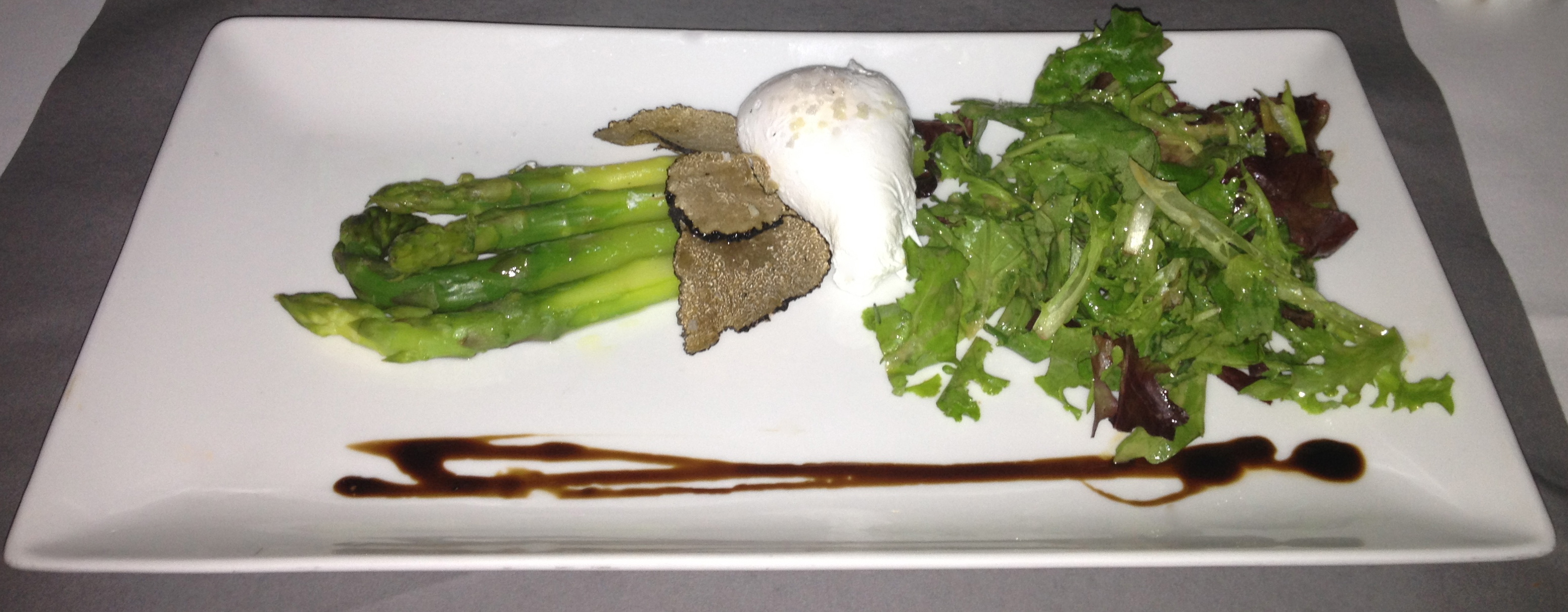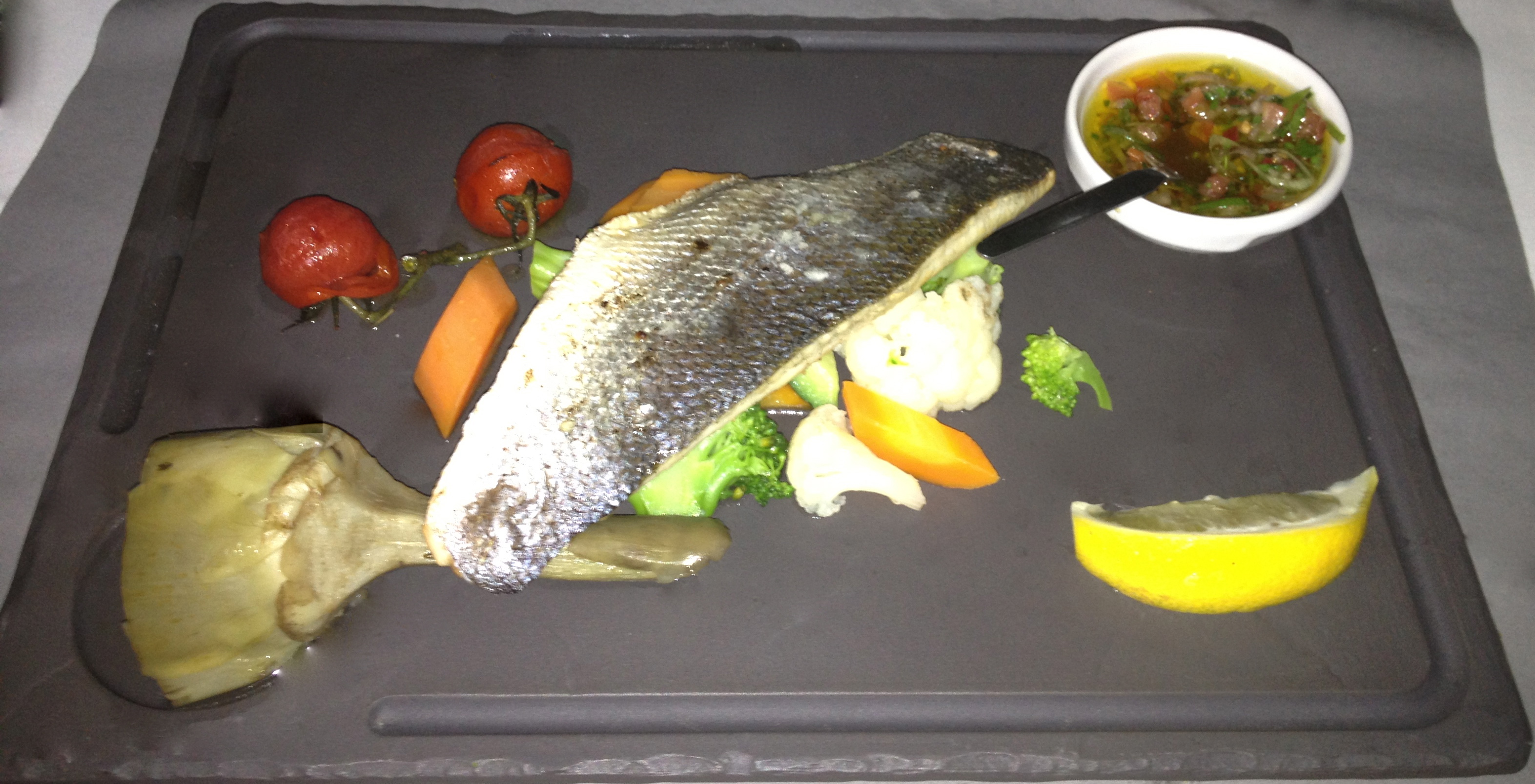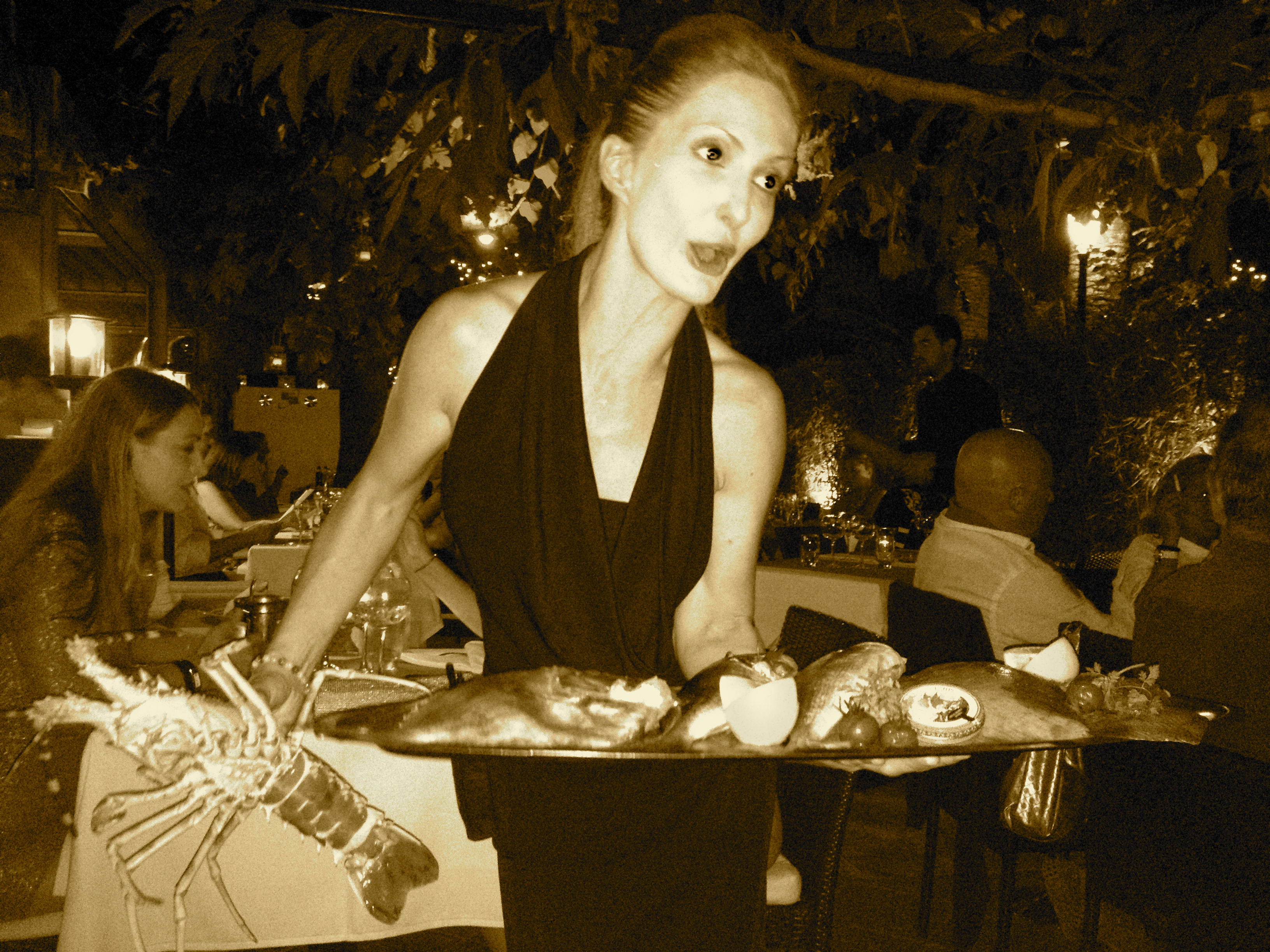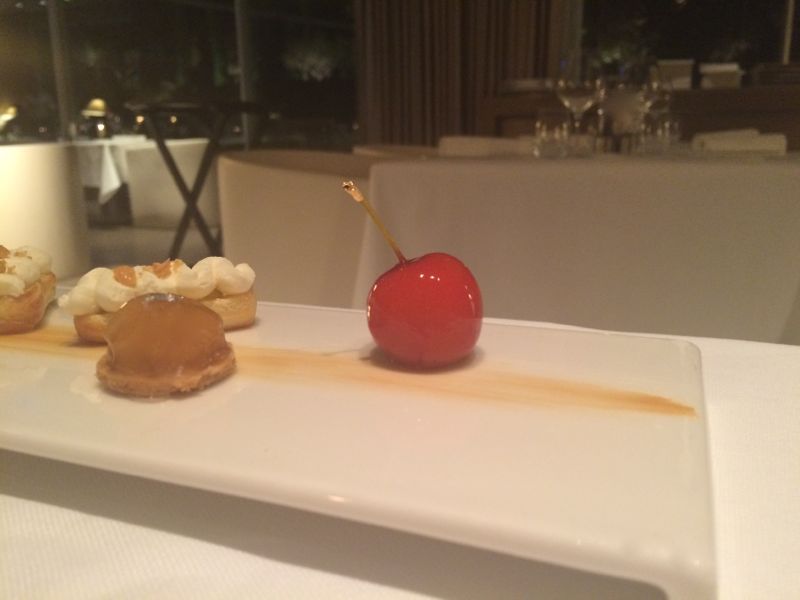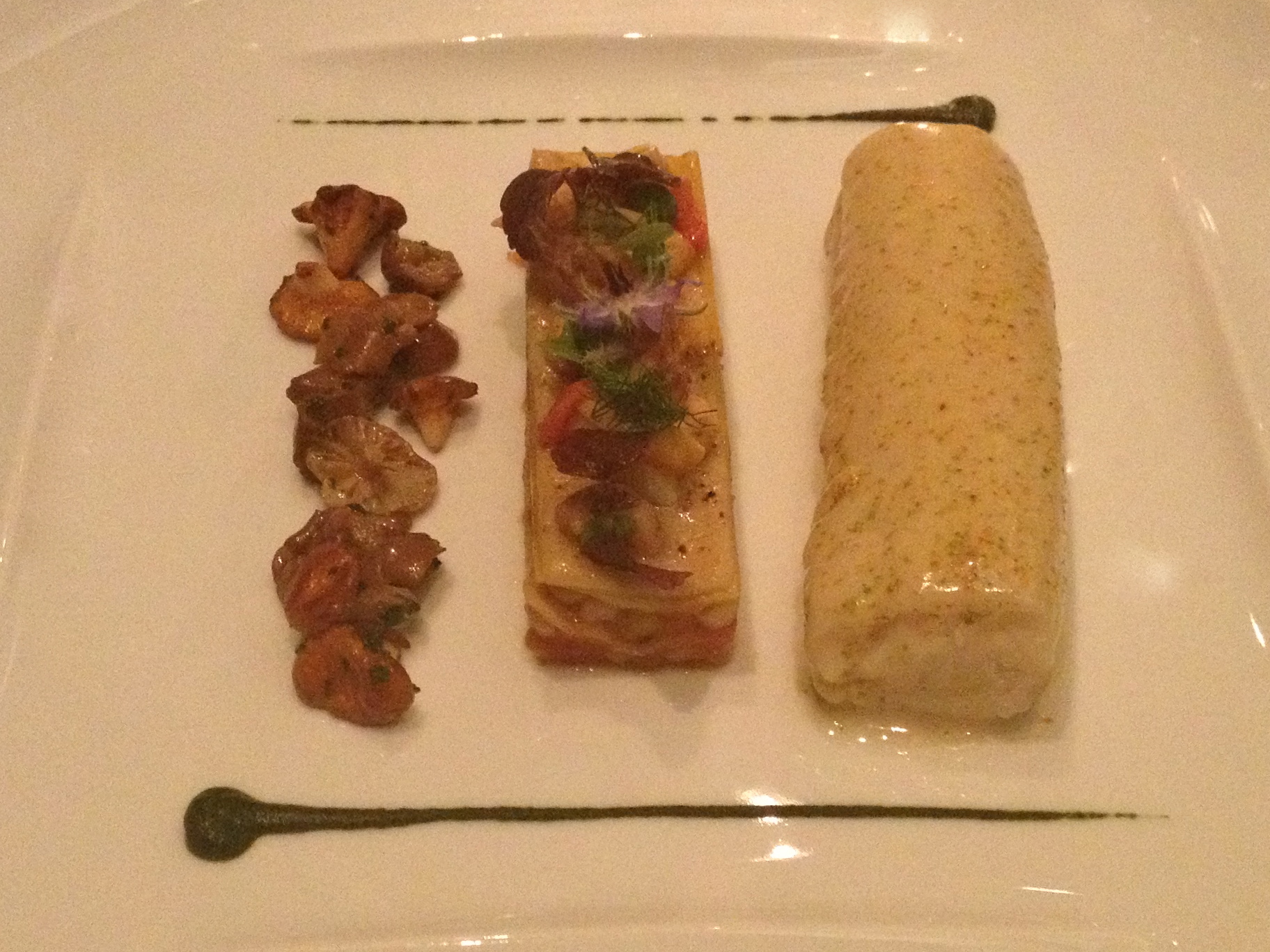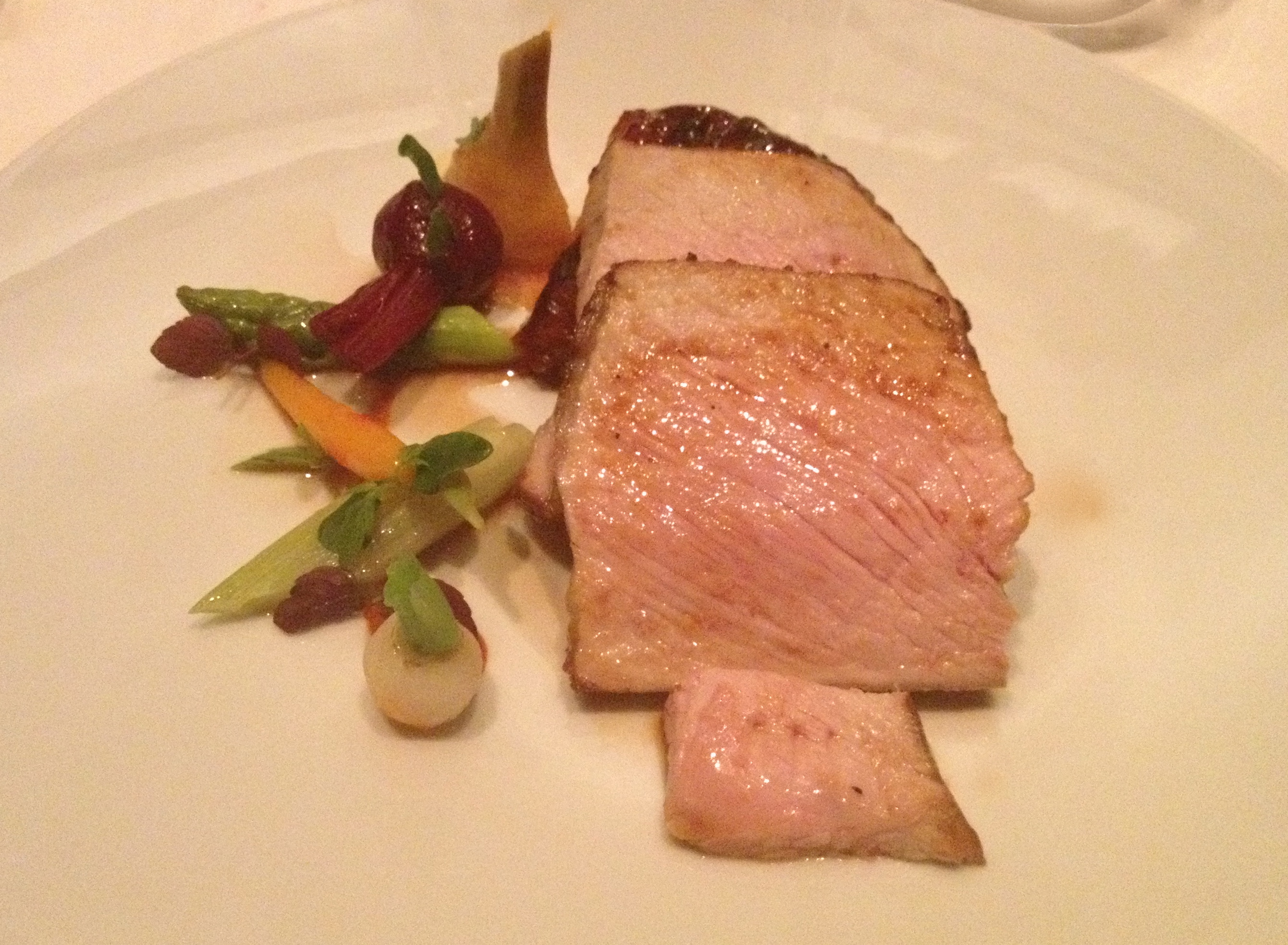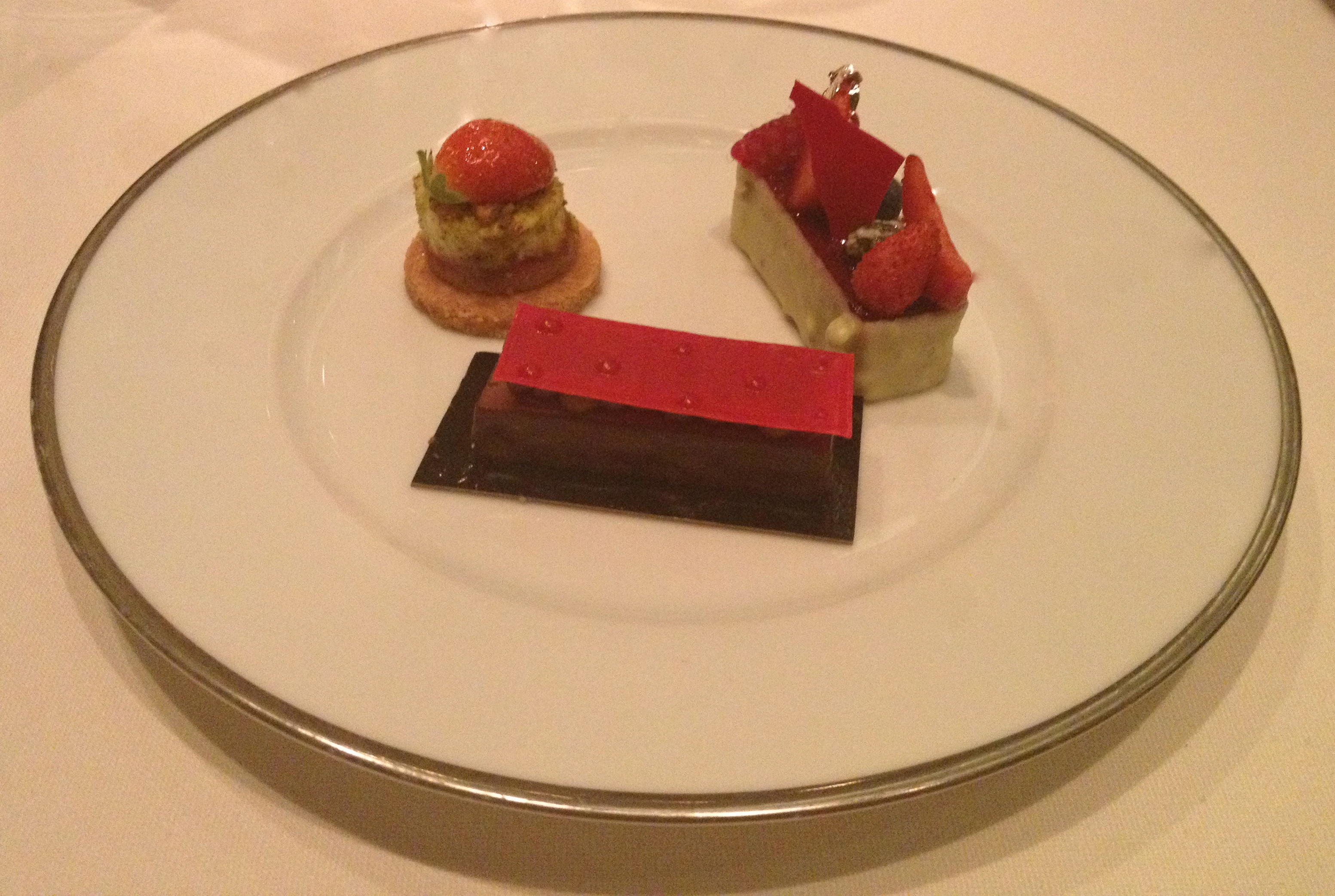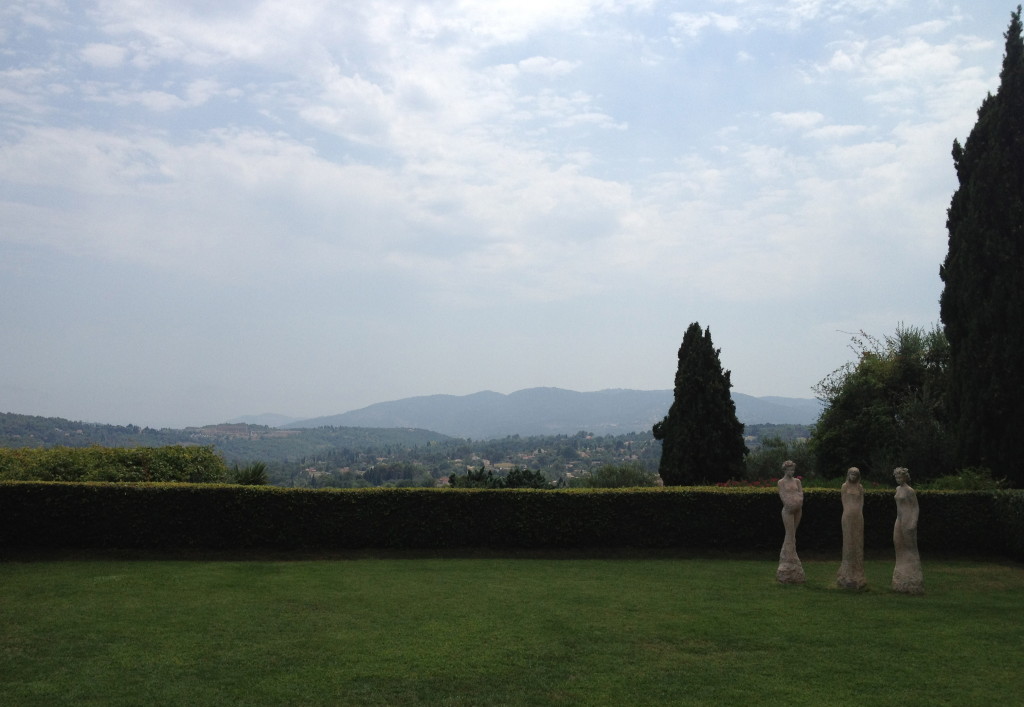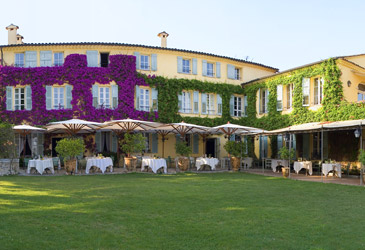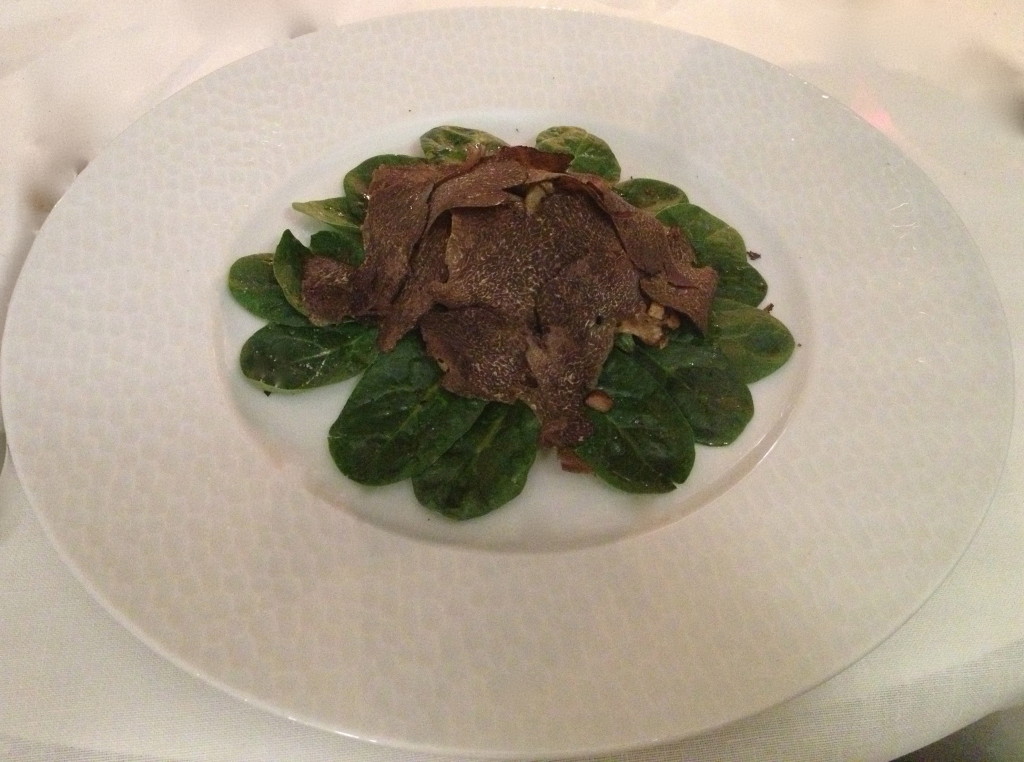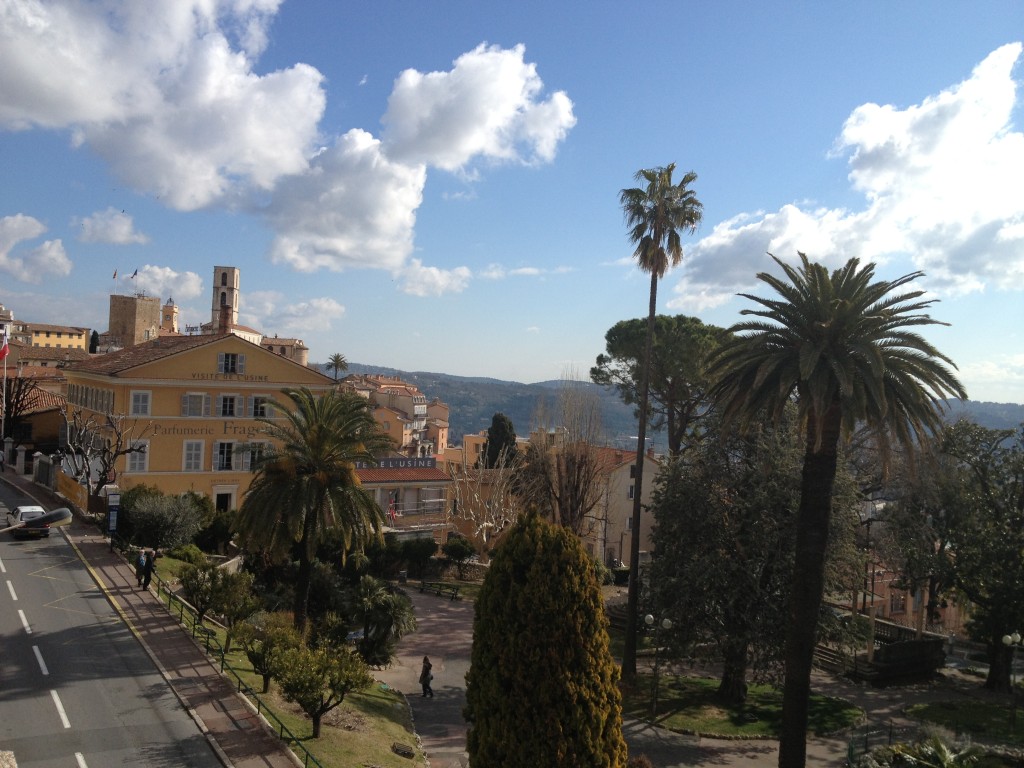Clos de Gustave in Gordes: family business set in ancient village
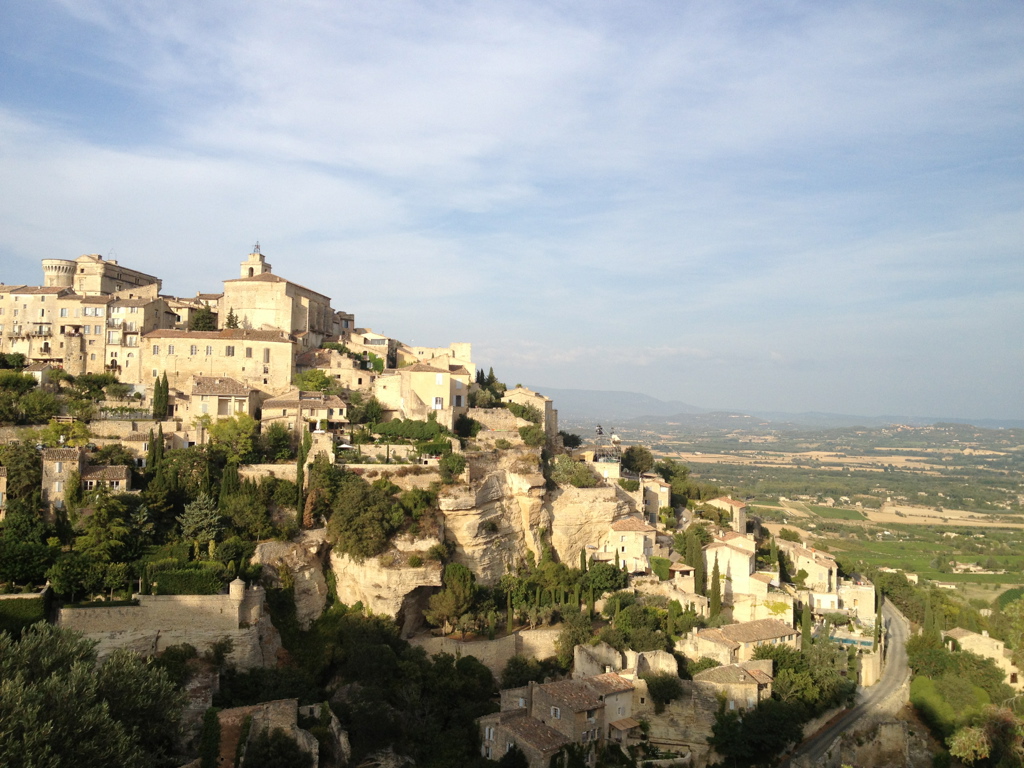
Chef: Jean-Didier Mathis and his team received in November 2011 the distinction of “Maitre-Restaurateur“, the highly acclaimed title for French restaurants preparing all their authentic meals on premises with the freshest ingredients.
Atmosphere: Friendly, authentic and casual. During the warm summer evenings, you will find most diners eating either outside in the garden or in a covered terrace. The restaurant is located in the quiet part of the old village of Gordes, which is very popular with tourists. Clos de Gustave is not a touristy place serving fries and simple meals, many locals and travelers from far away alike come to dine here because of its friendly service, family atmosphere and excellent authentic Provencal food. You can wait sometimes a bit longer for your order, but it does not spoil your evening, unless you are in a hurry somewhere. Who is rushing in Gordes, though? The warm, welcome feel the waiting staff spreads across the restaurant makes one feel relaxed and happy. Later, your patience is also rewarded by the great food the chef and his team prepared.
Food: Seasonal, fresh, authentic. The menu changes every day and features fresh seasonal produce from local markets. After being served a fresh home-made white bread with olive oil, you can savor the Sampler starters, selected daily by the chef. These are an excellent opportunity to try something very local. Every time I dine at the Clos de Gustave, there is something new and tasty in the starter selection.
During our visit this summer we were treated to a fresh cantaloupe melon infused with sweet wine, cherry tomatoes with mint and local goat cheese, excellent white fish ravioli sprinkled with parmesan and herbs, a bowl of green salad with olive oil and a concentrated yet refreshing vegetable velouté. It was all simply amazing with the chilled velouté and ravioli winning all of our palates.
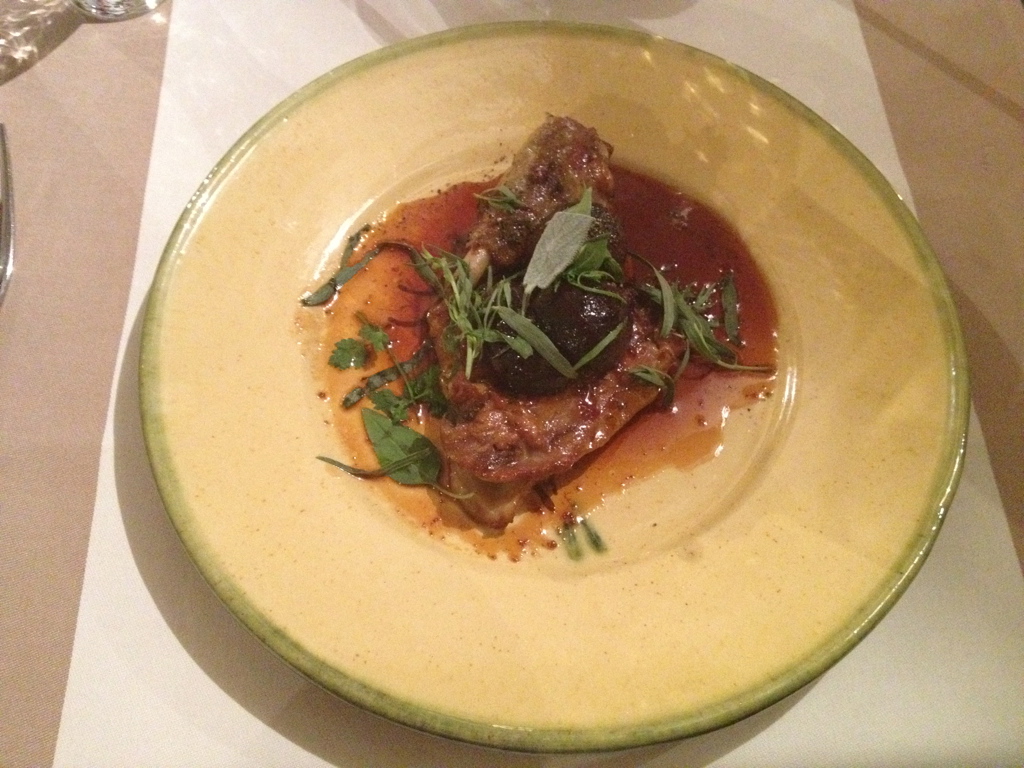
As my main course I ordered the Free Range Guinea Fowl Caramelized With Honey and Fresh Figs. The wing and thigh of Guinea fowl was roasted with lavander honey giving the meat juicy sweet texture. Fresh herbs including sage were tossed all over the plate not only as a decoration, but they also added a breadth to the otherwise boring guinea fowl meat. Well-cooked and genially accompanied with sumptuous and sweet figs, this was a guinea fowl that would please even the less excited fans of this bird on a plate.
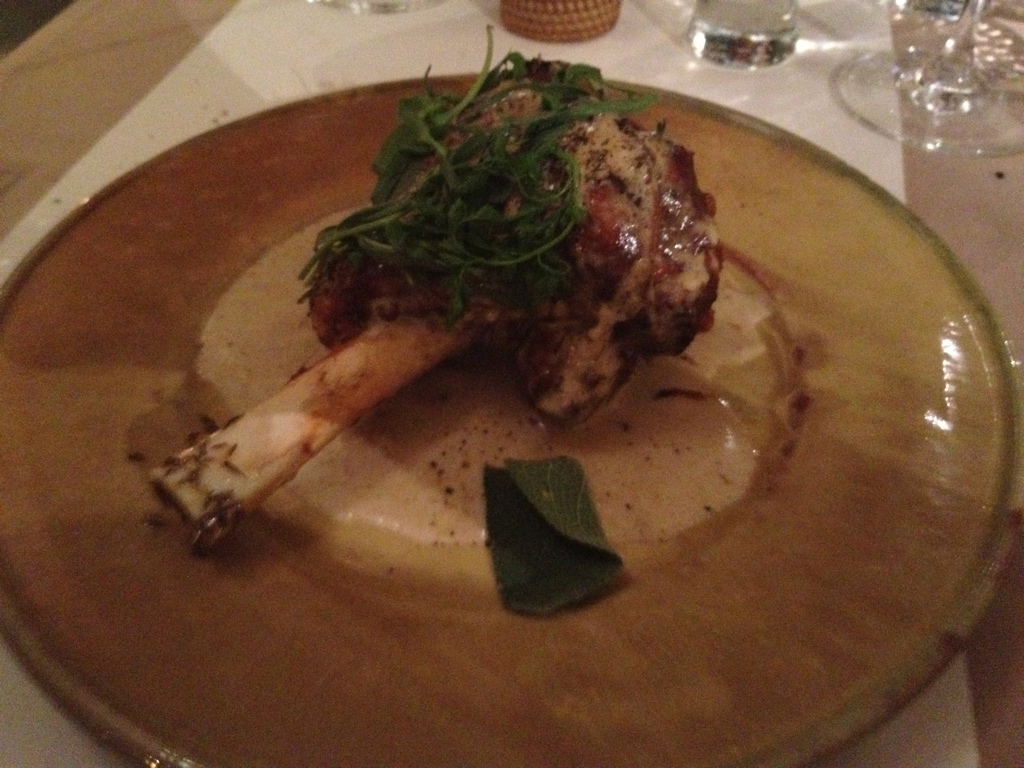
Gigotin of Lamb Roasted With Delicate Anchovy Cream in French called “souris d”agneau” was basically a lamb shank cooked in the oven, drizzled with anchovy cream and green rocket.
The main meals are usually served with mashed potato and one vegetable side dish. On this occasion we were given a juicy and steaming ratatouille ( the typical French vegetable stew). They both went particularly well with the succulent lamb.
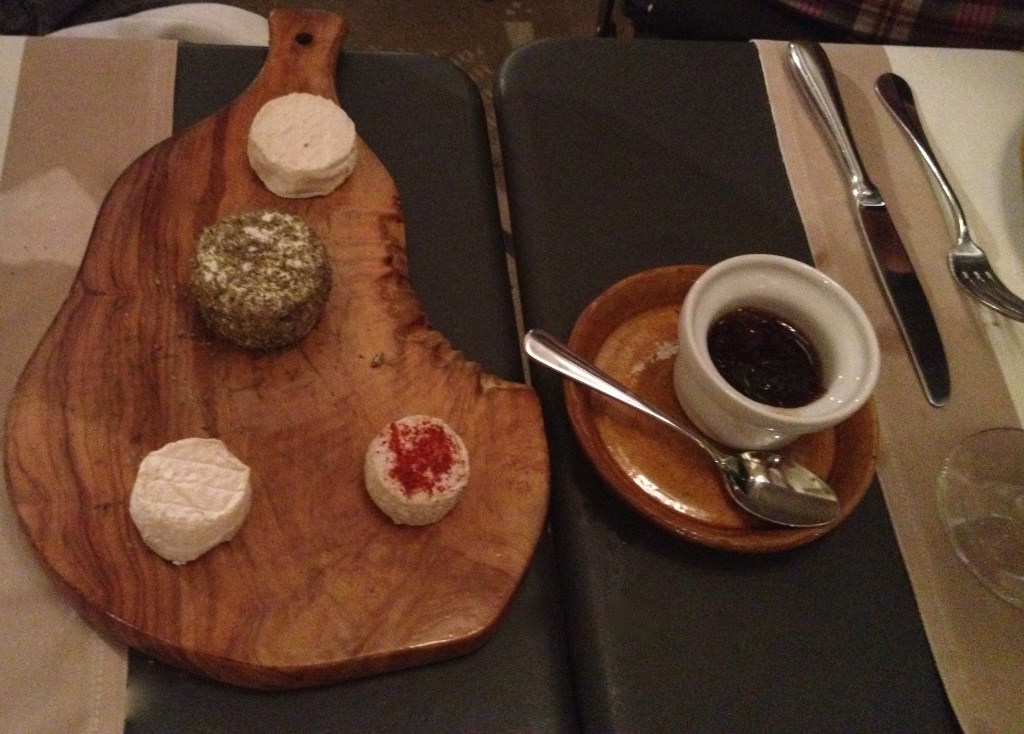
Instead of a dessert we went for a selection of fresh local goats cheeses – one plain, one with red peppers, one with herbs and a creamy one with a rind. They were served with local sweet jelly and perfect with the bread baked every morning at Clos de Gustave.
Cuisine: French traditional Provencal cuisine
Visit: August 2012
Price: Medium (Depending on what menu you choose: an assortment of starters is generous for €11 per person, main courses around €25; degustation of 10 specialities & 5 desserts for €35).
Drinks: From a regional aperitif such as pastis to the national pride of the French – the wines, you will be drinking for a great value. The wines are sourced from independent wineries in the area. We had an excellent local Merlot once there, but this time we ordered Château Les Eydins Cuvée des Consuls 2010 from Luberon. This organic blend of Syrah, Grenache and old Carignan had a fresh acidity, sweet tannins and concentrated dark fruits – all included. Paying €34 for a wine of such character was indeed a pleasure!
Opening season and hours: From late March till mid November every evening from 7:30 pm (except Sundays).
Contact: tel: +33 (0) 4 90 72 04 25
Address: Route de Murs 84 220 Gordes, France


